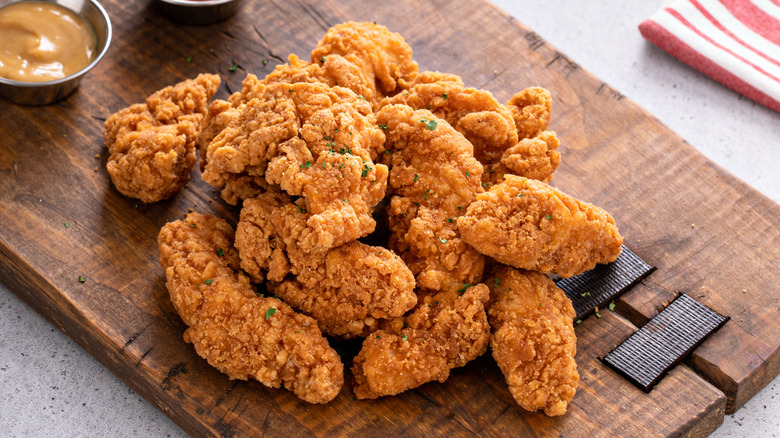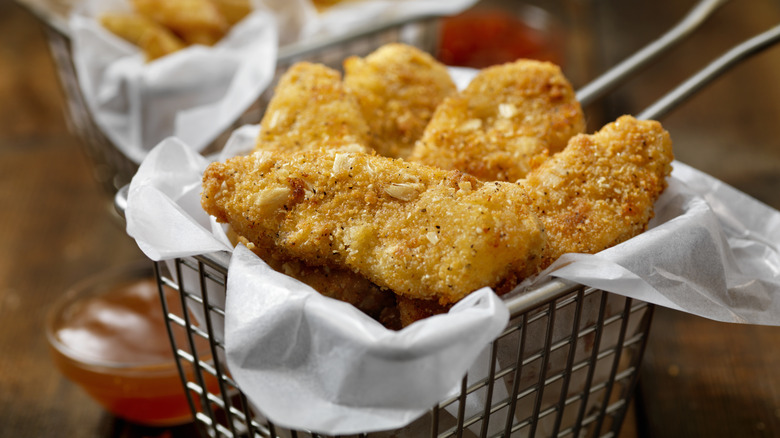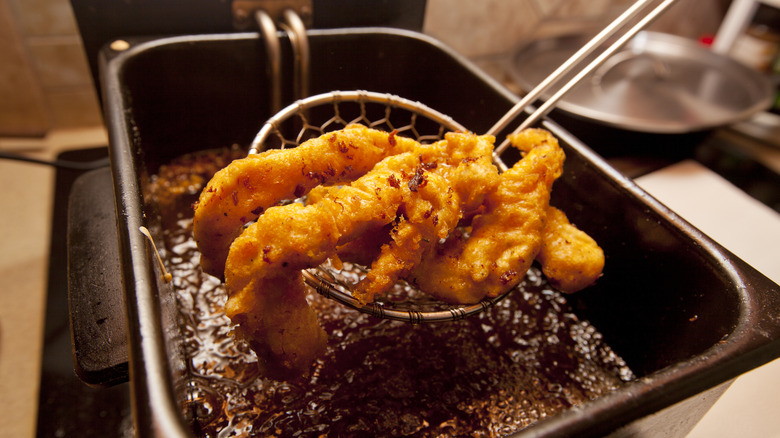There Is Actually A Difference Between Chicken Tenders And Fingers
What's in a name? When it comes to chicken tenders and chicken fingers, a lot actually. The two kid-friendly dishes may look the same, but they're typically made from different cuts of meat.
Chicken fingers are a catch-all moniker for fried strips of breast meat. Tenders, on the other hand, must come from the pectoralis minor, a muscle that runs under the breast that's also referred to as the inner filet or tenderloin. Neither are to be confused with boneless wings, also made from slices of breast meat, or chicken nuggets, made of processed chicken parts.
Because tenders come from a specific and less abundant cut of meat, they tend to cost more at the grocery store and can be harder to find. Home cooks may find it easier to simply slice a large breast into pieces, rather than hunt down the smaller muscle. However, they both taste the same and are equally as juicy.
Adding regional flavor to chicken tenders
They are arguably one of the least controversial items on any menu, but still chicken tenders (and fingers) inspire plenty of debate among restaurateurs and historians when discussing the origins of the food. Regardless of who made the original fried meal, the food dates back to the 1970s when beef prices increased and new technology streamlined chicken production, making boneless birds a more appealing and accessible option for fast food companies.
Americans quickly flocked to the chicken tender and have been inventing new ways to sauce it ever since. There's nothing wrong with the classic ketchup, mustard, or ranch, but rather than getting stuck in a rut, you can experiment with mature takes on the childhood staple, like enjoying Thai-inspired coconut chicken tenders and curry dipping sauce or French onion crema chicken fingers.
Or stick with traditional tenders and travel the U.S. through regional dips. In Mississippi, comeback sauce offers a spicy, tangy pep to fried food and salads. It's made from a blend of ketchup, mayonnaise, and hot sauce that's easy to replicate at home. In South Carolina, a gold-hued barbecue topping cuts through grease with its piquant yellow mustard, vinegar, and honey blend. And snackers with a sweet tooth can slather on Kansas City's smoky molasses and tomato-based BBQ sauce.
New takes on crispy chicken
If you're preparing chicken tenders or fingers at home, while you may prefer to do so with buttermilk, there are other ways to achieve a crusty exterior. Just look at the sheer number of international fried chicken styles out there.
To achieve a fluffy exterior, try taking a lesson from tempura batter. Swap a portion of flour for lighter potato or corn starch and use chilled seltzer for some added texture. As for the coating, look to schnitzel recipes for inspiration and try incorporating panko into the breading. For less mess and more crisp, you could also utilize the dry heat of an air fryer instead of stovetop frying.
Though chicken tenders and fingers are appropriate for all ages, many are now experimenting with meatless alternatives to poultry as health and environmental concerns take precedence. Plant-based chicken tenders and nuggets are widely available in the freezer aisle and even appear on KFC's menu. They utilize soy and pea-based proteins to achieve a meaty texture and feature a similarly crunchy coating.



